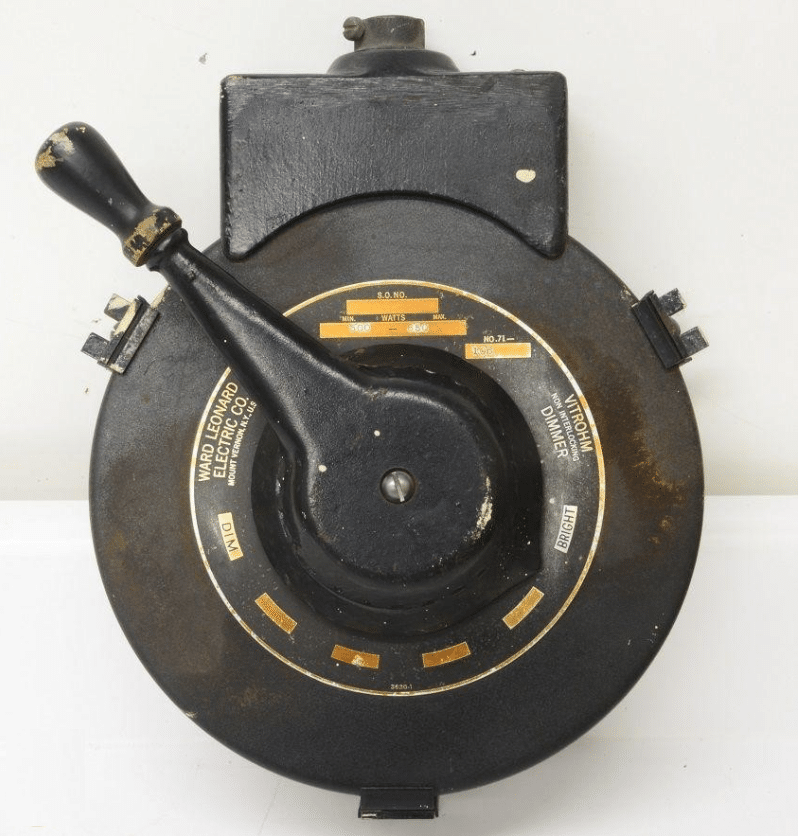
In deference to Louis Armstrong
“You like dimmer and I like switch
Dimmer, switch, Switch, dimmer.
Let’s turn the whole thing off”
That thing we use to control our lights – is it a switch or a dimmer?
“Hey Robert, check out the cool smart switches I want to install”
“You mean ‘smart dimmers’, right?”
“Dimmers, switches, whatever!”
Unfortunately, many people call everything a switch, even if it technically it is a dimmer.
Does it matter?
I’ll argue it does and you need to know why to be successful with your smart home lighting projects.
Switch or Dimmer?
I think we can all agree on what a light switch is and what it does.
Simply put – An electro-mechanical device that controls the flow of electricity to a light bulb or fixture.
Switch it on and the light turns on. Switch it off, and the light turns off.
Switches are easily to visualize. A pair of wires mechanically attached to a lever or similar device that brings the wires together (switch on) or separates them physically (switch off).
Dimmers, on the other hand, are more mysterious.
A rotary dial, lever, or other physical device that somehow adjusts the light level of a bulb or lamp.
We don’t know how they work. Do they turn the electricity “up or down” somehow? Are they adjusting voltage, current, amperage, wattage, or some other thing that only electricians (or electrical engineers) understand?
Early dimmers, used in theater and stage lighting, were massive coils of wire and generated enormous amounts of heat. A burly person with strong muscles was needed to pull the lever or rotate the large dial that controlled them.
Modern solid-state electronics to the rescue
Fortunately for all of us that appreciate adjustable lighting in our homes, in 1959 Joel Spira invented the first electronic dimmer that fit inside our standard wall switch boxes.
The rest, as they say, is history.
Joel went on to found Lutron Electronics, which to this day is a world leader in dimming and lighting controls.
How a dimmer actually works
Just in case you are still wondering, a dimmer doesn’t change the voltage or current up or down to dim the lights.
Using clever electronic circuitry, it simply turns the circuit on and off very rapidly. So fast that our eyes see continuous light.
The adjustable rate of the on and off switching results in the lights appearing brighter or dimmer.
Cheap dimmers and/or bulbs do react poorly. If dimming is done wrong, you get, quite simply, a flickering or non-dimmable light that is truly annoying and useless.
It’s a bit more complicated in reality with different kinds of lights such as florescents being very hard to dim and modern LED lights require changes to the dimming circuitry to work properly, but the principle is the same.
Dimmer or switch – why it matters
When planning smart home lighting controls, you need to know what each switch will be controlling.
If you are controlling a dimmable light (“lighting load” in the jargon of electricians and smart home installers) then you need a smart dimmer device.
If you are controlling a non-dimmable light or an appliance such as an exhaust fan in a bathroom, a ceiling fan, a florescent shop light, or other appliance, you’ll need an actual smart switch, not a dimmer.
A mistake can be costly
It’s not just about the price of the dimmer or switch.
If you connect a non-dimmable light to a dimmer, it won’t dim, but if you connect a fan or other device to a dimmer, you run the risk of actually burning out the device or worse, starting a fire.
Think about it – if you have a fan, motor, or other appliance and you were to turn it off and on 60 times a second, how long would it take before it was damaged and stopped working?
Choose a brand carefully
If you only want to install a smart switch or smart dimmer in one room or only to control a single device, then no problem.
But if you plan to grow your installation from a single device or room to eventually control most of your house, choose wisely.
Many smaller brands and manufacturers specialize in either smart switches or smart dimmers, but not both.
You could mix-and-match products from different companies, but if you aren’t careful, your wall switches will all look different and have mismatched colors as if your home was decorated by a ransom note author.
Ask any interior designer – there is no such thing as “white” but there are hundreds of shades of colors with strange names that all look white to you or me 🙂
Plan for what you need
Once you’ve chosen a brand and system, you’ll still need to plan how many dimmers versus switches you’ll need.
You will also want to determine where you need in-wall mounted dimmers and switches or plug-in modules.
Typically, in-wall controls are using for permanently installed lighting like built-in ceiling cans, hanging pendant lights, and outdoor lighting.
Plug-in modules are used with desktop or tabletop lamps, and free-standing reading or accent lights, but the details will depend on your home layout and decor.
